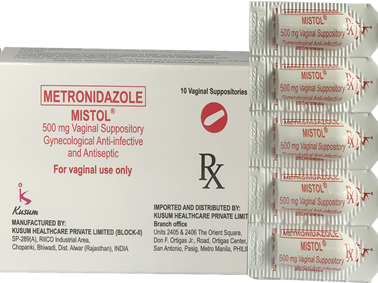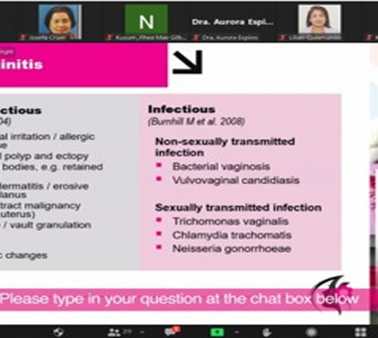Cerebrovascular Diseases
With “cerebro” referring to the largest part of the brain and “vascular” meaning arteries and veins, the word cerebrovascular refers to blood flow in the brain.1 As such, cerebrovascular diseases refer to all disorders that affect blood vessels and temporarily or permanently block blood supply to the brain.2-3 Restricted blood flow can happen due to many reasons, such as clot formation (thrombosis), narrowing of vessels (stenosis), blockage (embolism), or blood vessel rupture (hemorrhage), and can cause insufficient blood flow (ischemia) that affects brain tissues and may cause a stroke to occur.1,3
There are many types of cerebrovascular diseases, some of which include stroke, transient ischemic attack (TIA), aneurysms, and vascular malformations.2 In general, cerebrovascular disease symptoms depend on the location of the blockage and its impact on brain tissue and may thus have different effects per event. However, common symptoms they may share include vision loss, paralysis, or weakness of one side of the body, severe and sudden headache, confusion, difficulty communicating, and loss of balance and/or consciousness.2
Since any cerebrovascular event is a medical emergency, immediate medical attention is needed to evaluate the symptoms and reduce potential brain damage to the patient.2 Once at the hospital, the doctor will take the medical history and look for changes in vision or visual fields, reduced or altered reflexes, abnormal eye movements, muscle weakness, and/or decreased sensation. The doctor may order a cerebral angiography, a test that takes images of blood flowing through the arteries in the neck and brain, as well as other tests like the electrocardiogram (ECG) and imaging tests like MRI or CT scans to diagnose the cerebrovascular disease.2-3
References:
- Cerebrovascular Disease. AANS. https://www.aans.org/en/Patients/Neurosurgical-Conditions-and-Treatments/ Cerebrovascular-Disease. Accessed February 9, 2020.
- Kraft S. What to Know About Cerebrovascular Disease. Medical News Today. https://www.medicalnewstoday.com/ articles/184601.php. Published August 2, 2019. Accessed February 9, 2020.
- Cerebrovascular Disorders. https://www.aapmr.org/about-physiatry/conditions-treatments/rehabilitation-of-central-nervous-system-disorders/cerebrovascular-disorders. Accessed February 10, 2020.
- Wells DK. Cerebrovascular Disease. Healthline. https://www.healthline.com/health/ cerebrovascular-disease. Accessed February 9, 2020.
Stroke
The most common among all cerebrovascular diseases is stroke, which is characterized by permanent loss of sensation or motor function.1 Stroke, also known as a brain attack, happens when there is a sudden interruption of constant blood flow to the brain due to the brain’s blood supply being blocked (ischemic stroke) or one of the brain’s blood vessels’ bursting (hemorrhagic stroke).2-3
Although those of older age are at higher risk, any person can have a stroke at any time.3,4 Other uncontrollable factors that increase the risk for stroke include sex, ethnicity, and having a family history of cerebrovascular disease. There are also controllable factors that can increase the risk for stroke, such as high blood pressure, high cholesterol, obesity, substance abuse, smoking, and diabetes.
Strokes may occur without warning and can cause brain tissues to die, leading to brain damage, disability, and even death.2-3 This is why it is critical to know how to respond quickly if stroke is suspected. The American Stroke Association recommends the following acronym to recognize the warning signs of stroke and know how to respond.1,3,5
Face drooping – One side of the face seems “droopy” or there is an inability to smile.
Arm weakness – There is an inability to raise the arm above the head.
Speech difficulty – Speech is slurred or abnormal or the person has difficulty understanding it.
Time to call 911- Call the emergency hotline for immediate medical attention if the person showed any of the above signs.
Aside from these, other common signs of stroke include dizziness and nausea, severe headache, confusion, numbness, and weakness on one side of the body, particularly the face, arm, or leg.2
References:
- Wells DK. Cerebrovascular Disease. Healthline. https://www.healthline.com/health/ cerebrovascular-disease. Accessed February 11, 2020.
- Cerebrovascular Disease. AANS. https://www.aans.org/en/Patients/Neurosurgical-Conditions-and-Treatments/Cerebrovascular-Disease. Accessed February 11, 2020.
- Know the Facts About Stroke. Centers for Disease Control and Prevention. https://www.cdc.gov/stroke/facts_stroke.htm. Published May 13, 2019. Accessed February 11, 2020.
- Cerebrovascular Disorders. https://www.aapmr.org/about-physiatry/conditions-treatments/rehabilitation-of-central-nervous-system-disorders/cerebrovascular-disorders. Accessed February 10, 2020.
- Kraft S. What to Know About Cerebrovascular Disease. Medical News Today. https://www.medicalnewstoday.com/ articles/184601.php. Published August 2, 2019. Accessed February 9, 2020.
Managing Cerebrovascular Diseases
Although cerebrovascular diseases are fairly common, there are lifestyle interventions one can do to help prevent them. These are enumerated below.1-2
- Not smoking
- Eating a healthy, balanced diet that supports vascular health, such as the DASH diet
- Getting moderate to intense physical exercise for at least 150 minutes every week
- Maintaining a healthy weight
- Controlling blood cholesterol and lowering blood pressure with diet and medications if necessary
- Reducing alcohol intake
- Reducing stress
- Having regular annual checkups with the doctor
- Being aware of hormone replacement therapy risks
Stroke and other cerebrovascular diseases can cause death, but immediate medical attention can make a full or partial recovery possible.2 Patients with cerebrovascular diseases need to follow their doctor’s instructions and good lifestyle interventions to reduce the chances of having an attack.
For those who need treatment, doctors will choose the most appropriate treatment option depending on the type of cerebrovascular disease present and the extent of blood flow loss1. Most cases are treated with medications such as blood pressure medications, cholesterol medications, and blood thinners and are usually given to people whose arteries are less than 50% blocked or narrowed. More severe cases would usually require surgery to remove plaque or blockages or to insert a stent, if necessary. Rehabilitation such as physical therapy, occupational therapy, and speech therapy may also be needed for those who experienced temporary or permanent disability following permanent brain damage from the cerebrovascular disease in order to relearn and practice lost skills or learn new ways to perform tasks.1‑3
Reference:
- Wells DK. Cerebrovascular Disease. Healthline. https://www.healthline.com/health/ cerebrovascular-disease. Accessed February 10, 2020.
- Kraft S. What to Know About Cerebrovascular Disease. Medical News Today. https://www.medicalnewstoday.com/articles/184601.php. Published August 2, 2019. Accessed February 10, 2020.
- Cerebrovascular Disorders. https://www.aapmr.org/about-physiatry/conditions-treatments/rehabilitation-of-central-nervous-system-disorders/cerebrovascular-disorders. Accessed February 10, 2020.




